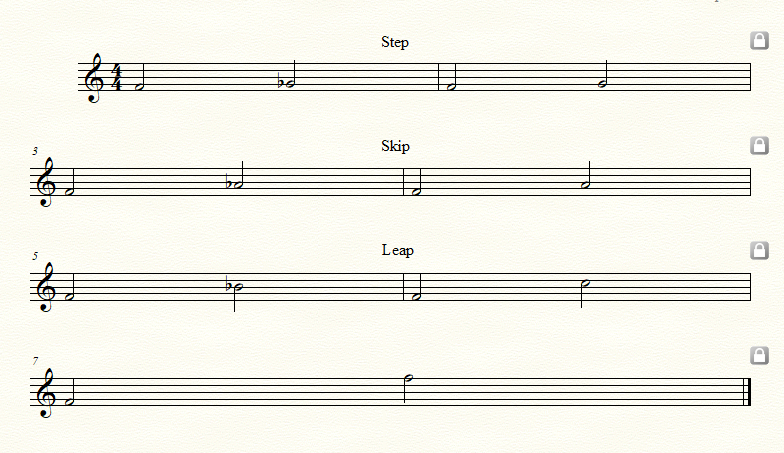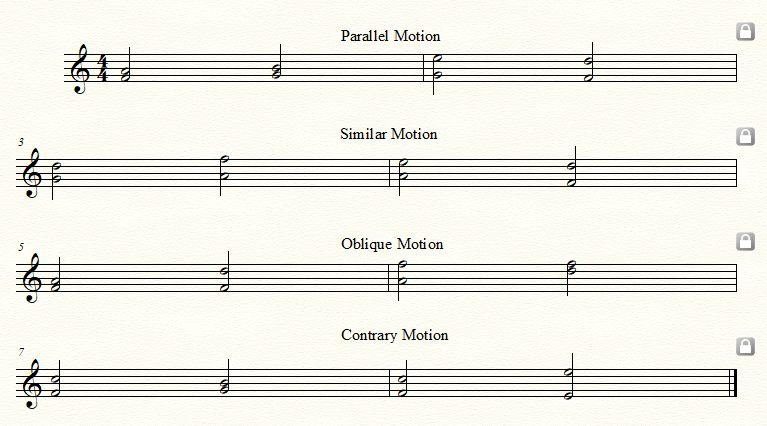In the last post, we covered the foundation of counterpoint – the Cantus Firmus. In this week’s post, we will cover the rules of First Species Counterpoint!
Types of Movement in First Species Counterpoint
The three main types of melodic movement in counterpoint are steps, skips, and leaps.
- Steps – intervals of a tone or semitone
- Skips – intervals of a major or minor third
- Leaps – intervals of a fourth, fifth, or higher

When melodies move mostly by steps they are described as conjunct, otherwise, they are described as disjunct. While the upper voice’s movement is described by its intervallic changes, it is also described in relation to its vertical harmony. The harmonic motion can be described as parallel, similar, contrary, and oblique.
- Parallel Motion – Both parts move in the same direction by the same interval (not to be used between perfect consonances)
- Similar Motion – Both parts move in the same direction but not by the same interval (can be used freely, except when approaching a perfect interval. In that case, you must ensure the upper voice is only moving in a stepwise motion)
- Contrary Motion – Both parts move in opposite directions. (This is the preferred motion as it gives independence and balance to the lines)
- Oblique Motion – One part repeats the previous pitch and the other part moves by step, skip, or leap (This motion is NOT DESIRABLE)

Rules of First Species Counterpoint
- The melody should have a clearly defined peak in the first half and come back to rest at the tonic in the last bar
- Begins with a Perfect 5th, Perfect Octave, or Unison
- Ends with a Perfect Octave (8ve) preceded by the Leading Tone or the Supertonic
- If the C.F. uses the Leading Tone then the counterpoint melody uses the Supertonic to approach the Tonic, similarly if the C.F. uses the Supertonic the counterpoint melody uses the Leading Tone
- If you are in a minor key, raise the leading tone at the final cadence but avoid using the raised leading tone anywhere else within your counterpoint
- If the C.F. uses the Leading Tone then the counterpoint melody uses the Supertonic to approach the Tonic, similarly if the C.F. uses the Supertonic the counterpoint melody uses the Leading Tone
- Stepwise motion is preferred and contrary motion is most desirable
- Excessive repetition of any note is not desirable, nor is the use of a recognizable riff/motif
- Excessive repetition of any interval consecutively is forbidden (no more than 3 in a row)
- Parallel Perfect intervals are forbidden because they sound hollow

Guides to 1st Species Counterpoint
The following 2 videos give the framework for 1st species counterpoint.
Example of First Species Counterpoint
This video demonstrates me playing a 1st species counterpoint.
The video below illustrates an 1st species counterpoint improvisation on a given Cantus Firmus.
